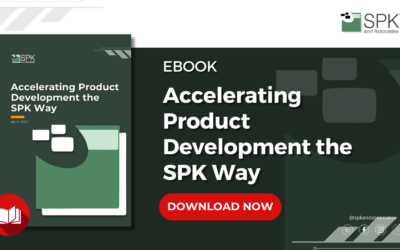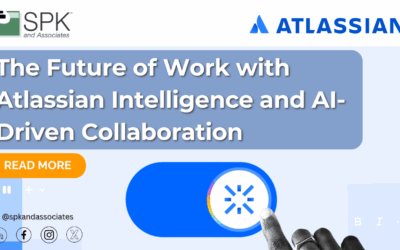Intro
A warm welcome from my side. My name is Floren Hamler. I’m representing the Balluff Group. We are based in Germany, close to Stuttgart. Some facts about Balluff: we have half a billion euros in sales, 4,000 employees worldwide, more than 35 own sales subsidiaries, and multiple production locations. We are a fourth-generation family-owned and managed company. In 2021, we celebrated our hundredth anniversary. For good reasons, we couldn’t celebrate as big as we wanted, so we created a video to better explain what we do and who we are.
What is Industrial Automation?
Factory automation: what is that? A spaetzle press, a very famous tool. Don’t worry, you’re not at Williams-Sonoma. We’re still at Balluff. We made this in the 1950s to prepare a very traditional dish, a Swabian noodle, a Swabian pasta. Usually, you take a wooden board and chop dough into the water. That’s how you make it traditionally. Our DNA is automation. We automated the production process of this to make it more repeatable and safer. We really started as a repair shop for bicycles, a mom-and-pop shop, and since then, we’ve transformed ourselves into a market leader of industrial automation. Our products are basically the sensors of machines, the ears and the eyes that help our customers keep track of their processes. From a tool shop to a real high-tech company, we provide solutions to many industries and enable modern production at our customers’ facilities.
Balluff’s Production
Here is a complete overview of what we make. Don’t worry, I will not deep dive into every product group. The idea is to give you an idea of the complexity we’re dealing with. We have 40,000 sellable products, not on our shelf, but in our offering. Many of them have been available for decades with little reworks, tweaks, and redesigns, but all of them carry a long history and a lot of data. This is the world of our customers. In this world, we help them to position, measure, identify, and help them produce in well-established processes and in rapidly growing, highly demanding new areas of technology. In this area, we deal with certifications, global standards, and we need to document and maintain all those standards and have them available to our customers.
Green Energy
We are also involved in the green energy revolution. If you go downstairs, you’ll see windmills. Balluff takes pride in helping position the blades into the wind, like sails in the wind, to get maximum production. The delicate wafers you see on the other side need to be positioned right to help our customers produce the new oil of these days. Many of us have experienced in the last two years how precious and sometimes unavailable this oil is. These two industries have in common tremendous customer-specific requirements, special quality processes, and special terms and conditions that we need to tie into the product and always have available.
This is the arena we are playing in, and it has experienced a significant transformation in the last decade. If you remember Hanover Fair and many other industry shows about 10 years ago, it was about Industry 4.0, very much driven by German industry, and nobody really knew what it meant. In the last few years, it became clear: the Industrial Internet of Things (IIoT) is the future everyone is striving for. This change has brought tremendous opportunities to Balluff, be it condition monitoring or predictive maintenance. All of this is not disruptive but new to us. At a sales meeting in 2015, I tried to shock my team by saying we would stop selling sensors. Everyone was like, “What?” I told the team, “Don’t worry, we will continue selling data sources.” Speaking of oil, with chips and wafers, data is definitely the oil of today’s industry. We need to understand how our processes work, the state of our machines, the output, the yield, and OEE. All of this needs to be made transparent. The sales team was happy again, seeing it as a great opportunity for the future.
Coding and Engineering
Another change in our products in the last 10 years is the amount of software lines of code, which has skyrocketed. Industrial communication and interlinking products are becoming more and more necessary for effectiveness and success in this market. We learned to see the benefits of requirements engineering using Codebeamer for many years and reusable building blocks and software platforms. The beauty of something that has been intensively tested is that if someone plugs it into their new design, they know it works.
However, we still have the hardware aspect. Those 40,000 products are not really platforms. Balluff is at heart an engineering company. Our engineers take pride in always making the best solution. That means we had multiple data sources: data in the ERP system, Excel spreadsheets with homemade analyses, email systems, file servers, USB sticks. This made the reuse of building blocks impossible. Our products are in the new world at our customers’ sites, but our engineering process was still in the mom-and-pop shop days. That led us to start an internal transformation.
How PTC Benefits Balluff
After choosing PTC as a partner, we also changed our strategy. At Jim’s incredible presentation, I mentioned that we had everything on-premise because we believed it was only right if we did it ourselves. This attitude is common among German engineers and has led to a lot of good results. However, with increasing complexity, it’s not sustainable in the long term. Balluff needs to reduce internal complexity. We have a lot of internal complexity and need to reduce our variance and one-time developments to a fully platform-oriented approach. This approach will take years, but you have to start that journey one day. Our products help our customers focus on their business processes. None of our customers are making sensors or vision cameras; they produce their products. We also want PTC to help us focus on our core business.
PTC Cloud
With the integrated tool chain, we will get more transparency, helping us design better products. This transparency will extend from the design process down into production. With SaaS, we will benefit from best-in-class procedures and processes with high availability and increased cybersecurity. Making our servers hard to access also made them hard to access for our distributed engineering network, defeating the purpose of collaboration. The PTC Cloud architecture will enable better collaboration. We know this from our office applications, which help us seamlessly share documents and information. With our most precious resources in engineering, we want to be at the cutting edge of technology. We also expect better cost-efficiency. For me, as I’m heading technology and marketing in sales, time to market is most critical. With a platform-oriented approach and building blocks, we will have quicker answers for our customers and markets. The connection from the cloud to the shop floor is the future, and the PTC ecosystem will help us leverage this.
Windchill+
Seeing this live is the best way to understand. I strongly recommend visiting the Purdue Smart Factory, where software technologies and our products visualize and give work instructions and feedback to the person producing. This helps avoid mistakes and control production speed. This cooperation between hardware and software raises the bar for how our products can be used. Look for stack lights in PTC green to guide you to the presentation. In August, we will move to the PTC Cloud with Windchill+ software as a service at Balluff, making us one of the first customers with PTC. This makes us proud. It has been a long journey, and I want to thank PTC, PDS Vision as an integrator, and my team at home, including Christian, Martin, and Danela. I believe this will help us grow our business, get better results, and offer better products to our customers.
SaaS
One last note: technical presentation often falls short. We invest a fair amount of time in the change management of this process because we are dealing with engineers, who can sometimes be resistant to change. My major concern is getting a great product accepted and working. We invest time in change management, and I recommend it to everyone. Many of you are already PTC customers, and moving to software as a service is a change. You will see different usage and have concerns about data security. Do this, and with technical improvements and getting people on board, we can make this a successful project. Listen to their concerns and questions. This brings me to the end of my presentation. If there are any questions, I’m happy to answer them. Thank you very much for your attention.
[Applause]
Questions
Change Management
Can you please expand a little bit more about the change management? I agree with you; it often goes undone. What are some of the strategies or things that you’re looking to do with your team to make it more successful?
We have this as a stream in our project. There’s a team responsible for this. We have the users involved and the IT people involved because there are different views on this project. We get regular reports on KPIs: discussions, meetings, feedback, internal ratings, acceptance tests, constraints, and so forth. It’s really about involving the people, having early acceptance tests, and identifying the proponents and opponents. Bringing them together leads to interesting discussions. It’s about listening to them, not just imposing changes. We involve them in why it’s better and still offers opportunities for customization. The most important thing is to listen to them, talk to them, give them a platform, and achieve a more successful project. We’re not done yet, but we pay attention to this.
PLM
Thank you. If you’re going live with Windchill Plus in August, what is your existing system today? What is your existing PLM system?
We don’t really have a PLM system in the full-blown version. We used our SAP system as a PLM system. Product lifecycle was more of an eventuality. Our processes were behind, so we are taking a leap, not just a step.
Data Management
Thank you for your presentation. Can you speak to us about how you approached the challenge of data being in different places and how you tried to solve that problem to ensure the data was ready for this leap?
I was kind of hoping you’d avoid that question, but thank you. This is one of our major challenges. It will not be a lift and shift. We will likely use a tool-based approach to pull data out of the system, using artificial intelligence to adapt it for the PTC structure. The structure is different, with different bill of materials and so forth. We will get benefits from this, like location-based bill of material, but it will be an expensive process because we haven’t done it for 40 years. It will require technical insights from our experts. We hope we won’t have to touch every piece of data, but we will need to check, see, and validate. After this, it will be like Ground Zero, building a more solid foundation for the future. It is a critical component of the project, so thank you for bringing it up.
Thank you very much for your attention.
[Applause]







